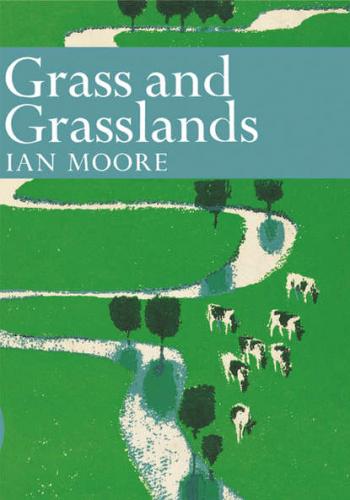Collins New Naturalist Library 48
Grass And Grasslands
by
Ian Moore
James Fisher, M.A.
John Gilmour, M.A., V.M.H.
Sir Julian Huxley, M.A., D.SC., F.R.S.
Sir L. Dudley Stamp, C.B.E., D.LITT., D.SC.
PHOTOGRAPHIC EDITOR
Eric Hosking, F.R.P.S.
The aim of this series is to interest the general reader in the wild life of Britain by recapturing the inquiring spirit of the old naturalists. The Editors believe that the natural pride of the British public in the native fauna and flora, to which must be added concern for their conservation, is best fostered by maintaining a high standard of accuracy combined with clarity of exposition in presenting the results of modern scientific research
Table of Contents
CHAPTER 1 THE ROLE OF GRASS IN NATIONAL LIFE
CHAPTER 2 THE ORIGIN AND DEVELOPMENT OF GRASSLAND
CHAPTER 3 THE GRASS PLANT AND ITS VALUE TO MAN
CHAPTER 4 TYPES OF BRITISH GRASSLAND
CHAPTER 5 THE BREEDING OF GRASSES
CHAPTER 6 THE CONSTITUENTS OF GRASSLAND
CHAPTER 7 SEED PRODUCTION AND TESTING
CHAPTER 8 WEEDS IN GRASSLANDS
CHAPTER 9 PESTS AND DISEASES OF GRASSLAND
CHAPTER 10 THE INFLUENCE OF THE ANIMAL
CHAPTER 11 THE INFLUENCE OF MAN
CHAPTER 12 TOOLS AND THE GRASSLAND FARMER
CHAPTER 13 THE CONSERVATION OF GRASS
CHAPTER 14 ANIMAL HEALTH ON GRASSLAND
CHAPTER 15 THE MEASUREMENT OF GRASSLAND OUTPUT
CHAPTER 16 THE ECONOMICS OF GRASSLAND FARMING
CHAPTER 17 OTHER IMPORTANT ECONOMIC GRASSES
CHAPTER 18 LAWNS AND PLAYING FIELDS
CHAPTER 19 SUMMING UP
The New Naturalist series has already covered many facets of the interrelationship between man and nature, and the Editors are glad to be able to add a further volume of this kind to the series. The grass family has a strong claim to be regarded as the most important to man in the whole plant kingdom, and we are fortunate to have persuaded Professor Ian Moore, the Principal of Seale Hayne Agricultural College in Devonshire, to draw on his unrivalled knowledge of grasses and their utilisation for the writing of the present volume. His special interest is the use of natural and seeded grass pastures for the feeding of livestock. Striking advances have been made in recent years in the improvement of such pastures and Professor Moore has naturally dealt very fully with this vital link in the feeding of the human race; but he also covers that other equally important role of the grass family in our economy, the cultivation of cereal crops for the production of grain. Grass lawns and playing fields form a centre-piece in most British gardens and public parks, and Professor Moore has a chapter on these, but the horticultural value of grasses as ornamental plants in herbaceous borders and woodland gardens is less well known. Professor Moore touches on these and many other unfamiliar uses for the ubiquitous grass family, but grass as fodder is his central theme and his chapters on the historical development of our pastures, their economic significance, and their improvement through the selection and breeding of new strains of wild species make a fascinating story.
Professor Moore does not give detailed descriptions of our 160 or so wild British grasses, as these are easily available in Dr. C. E. Hubbard’s excellent Penguin volume, but his keys to the commoner species will enable anyone with a minimum of botanical knowledge to identify these both in flower and from vegetative characters.
Grasses do not lend themselves to coloured illustrations, so we have confined ourselves to a frontispiece of Dürer’s superb study, and we hope readers will feel that the fine series of black-and-white photographs adequately represents the family and its contribution to the British landscape.
THE EDITORS
Our
